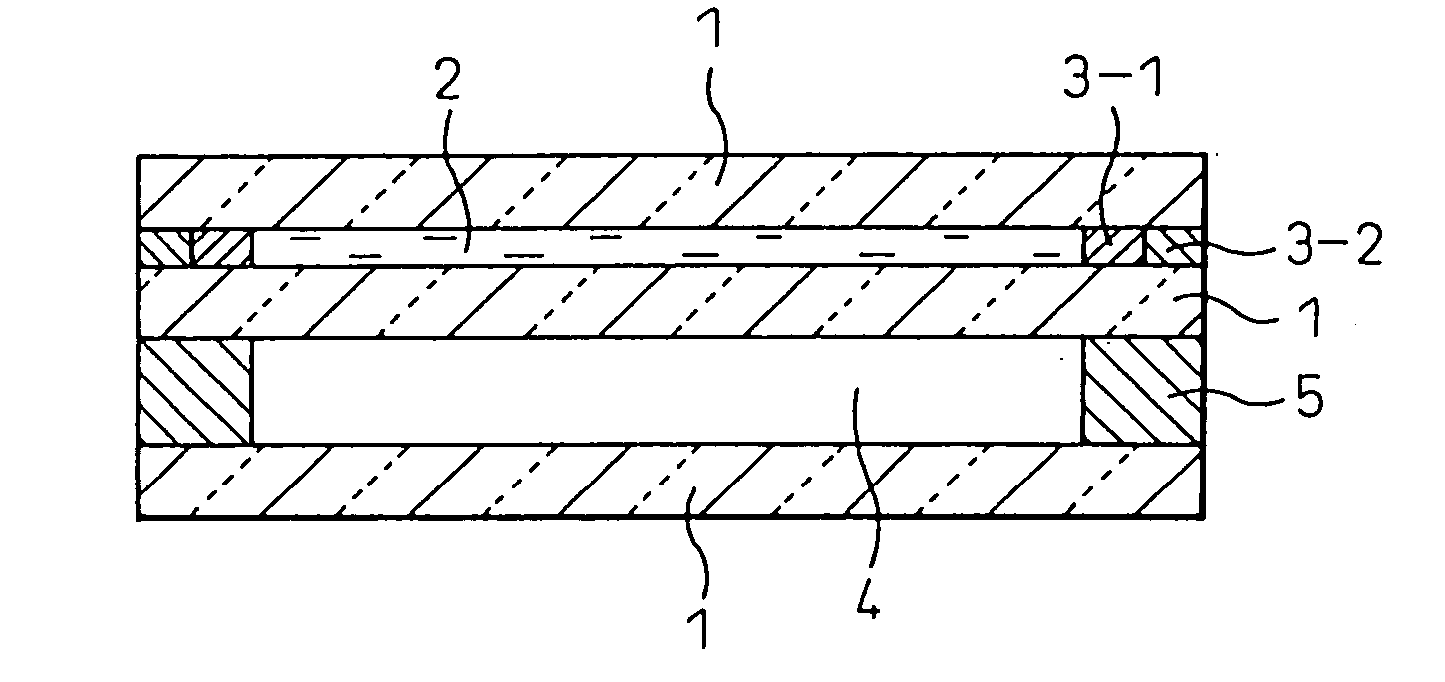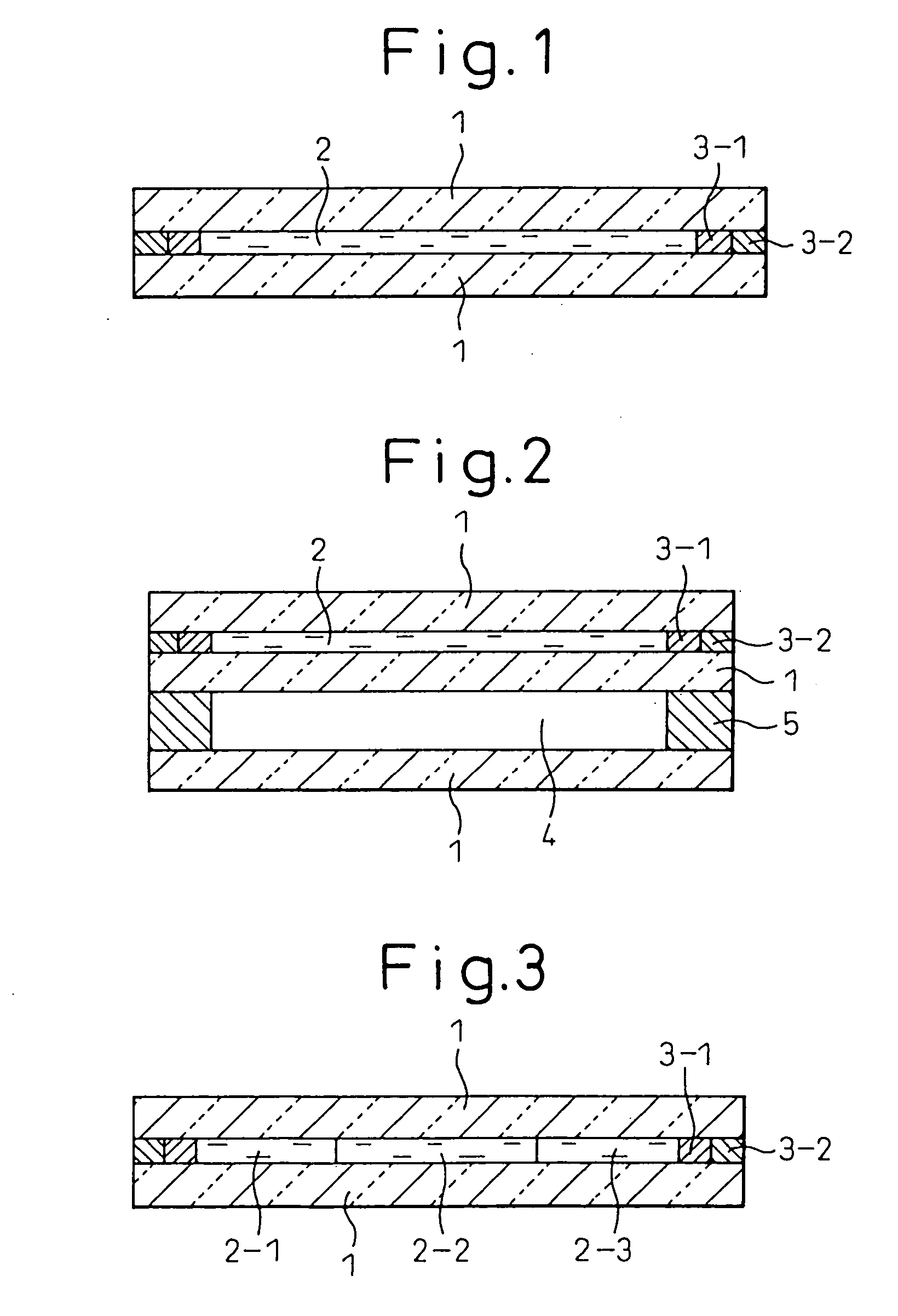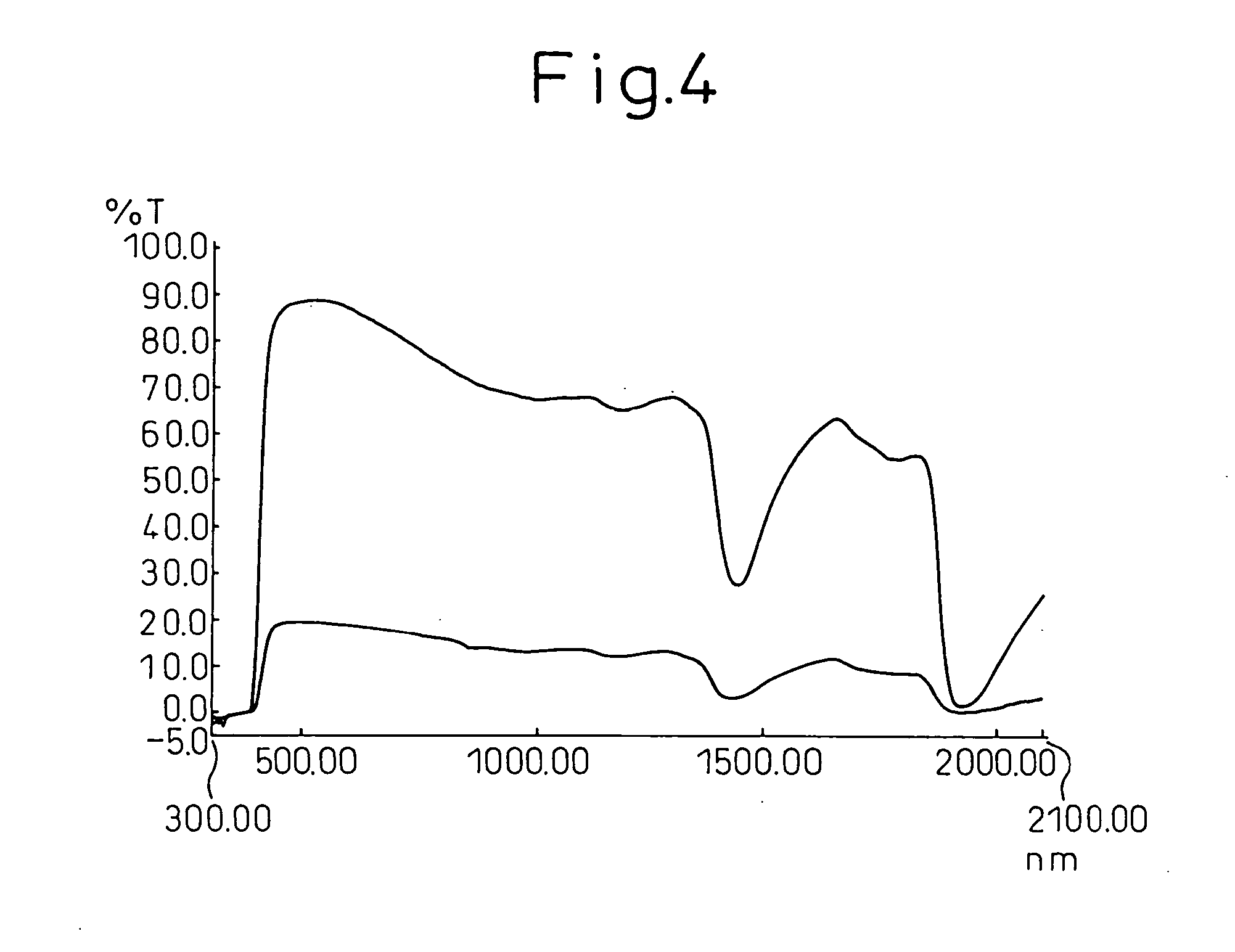Laminate-controlling light autonomously and window using the same
- Summary
- Abstract
- Description
- Claims
- Application Information
AI Technical Summary
Benefits of technology
Problems solved by technology
Method used
Image
Examples
example 1
[0050] Two separate isotropic aqueous solutions (A) and (B) transparent at 20° C. were prepared containing UV-106. Solution (A) was HPC / TP400 / UV-106 / water / NaCl=50 / 25 / 1.25 / 87 / 2, and solution (B) was HPC / TP400 / UV-106 / water=50 / 25 / 2.5 / 87. Solution (A) was colorless and transparent with transmittances of RT: 88.7% and HT: 19.5%. The initial opacity temperature was 30° C. In the UV test, irregular aggregation was seen immediately after continuous irradiation for 200 hours, but there was no generation of air bubbles. The irregular aggregation disappeared naturally after standing at room temperature, and virtually no variation occurred in the initial opacity temperature, such that a satisfactory opaque, light-blocking state was sustained. Solution (B) was colorless and transparent with transmittances of RT: 88.6% and HT: 13.0%. The initial opacity temperature was 41° C. The results of the UV test were similar to those of solution (A). A high degree of weather resistance was therefore confir...
example 2
[0051] Three separate isotropic aqueous solutions (A), (B) and (C) transparent at 20° C. were prepared containing 2,4-dihydroxybenzophenone (hereinafter, “UV-100”), 2-(2,4-dihydroxyphenyl)-2H-benzotriazole (hereinafter, “UV-7011”) and ionic functional group-containing Compound No. 1 mentioned above, respectively. Solution (A) was HPC / TP400 / UV-100 / water / NaCl=50 / 50 / 1.25 / 85 / 1.5, solution (B) was HPC / TP400 / UV-7011 / water=50 / 50 / 1.25 / 85, and solution (C) was HPC / TP400 / No. 1 / water=50 / 25 / 1.25 / 87. Solution (A) was colorless and transparent with transmittances of RT: 89.0% and HT: 12.5%. The initial opacity temperature was 31° C. The results of the UV test were satisfactory as in Example 1. Solution (B) was colorless and transparent with transmittances of RT: 88.6% and HT: 13.7%. The initial opacity temperature was 42° C. The results of the UV test were satisfactory as in Example 1, although some faint yellowing occurred. Solution (C) was colorless and transparent with transmittances of RT: 89...
example 3
[0052] Seven separate isotropic aqueous solutions (A) to (H) were prepared containing the UV-106, UV-100, UV-7011 and Compound No. 1 used in Examples 1 and 2, as well as a compound obtained by adding three ethylene oxide units to the 4-position hydroxyl of UV-7011 (hereinafter, UV-7011G3). PgH represents phenyl monoglycol, PhG-55 represents phenyl glycol having a polyethylene oxide group and with a hydroxyl value of about 165, BPE-60 represents a substance with a polyethylene oxide group added to bisphenol A and a hydroxyl value of about 228, and Ca-2H represents calcium chloride dihydrate. Solution (A) was HPC / TP400 / PhG-55 / UV-100 / water / Ca-2H=50 / 22.5 / 10 / 2.5 / 86 / 5.5, solution (B) was HPC / PhG-55 / UV-100 / water / Ca-2H=50 / 15 / 2 / 86 / 10, solution (C) was HPC / TP400 / PhG-55 / UV-7011 / water / NaCl=50 / 25 / 5 / 1.5 / 87 / 2.5, solution (D) was HPC / PhG-55 / UV-7011G3 / water / Ca-2H=50 / 50 / 1 / 86 / 10, solution (E) was HPC / TP400 / No. 1 / water / Ca-2H=50 / 25 / 1 / 86 / 5, solution (F) was HPC / BPE-60 / PhG-55 / UV-100 / water / NaCl=50 / 20 / 10 / 1 / ...
PUM
| Property | Measurement | Unit |
|---|---|---|
| Temperature | aaaaa | aaaaa |
| Temperature | aaaaa | aaaaa |
| Percent by mass | aaaaa | aaaaa |
Abstract
Description
Claims
Application Information
 Login to View More
Login to View More - R&D
- Intellectual Property
- Life Sciences
- Materials
- Tech Scout
- Unparalleled Data Quality
- Higher Quality Content
- 60% Fewer Hallucinations
Browse by: Latest US Patents, China's latest patents, Technical Efficacy Thesaurus, Application Domain, Technology Topic, Popular Technical Reports.
© 2025 PatSnap. All rights reserved.Legal|Privacy policy|Modern Slavery Act Transparency Statement|Sitemap|About US| Contact US: help@patsnap.com



